Delphi, Metéora, and Thermopylae
Delphi; The Tholos
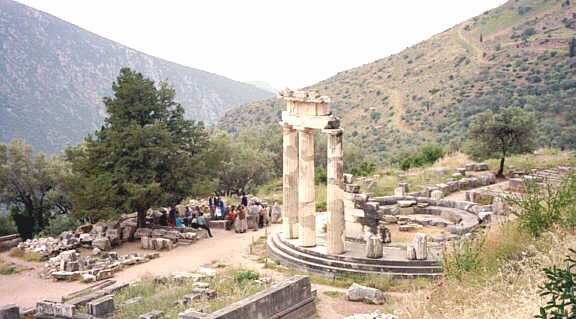

Not far away from the the main complex of Delphi was the ruins of another temple (circa 4th century BC) whose purpose is not known (possibly dedicated to Athena?). As the photo shows, there isn't much left, but you can get an idea of how it was shaped. If you look carefully at the columns, you can see that there are parts that are not original. When Delphi was razed, the temple was left in total ruin but in recent years (starting in the 1930s) reconstruction efforts have pieced things back together somewhat.
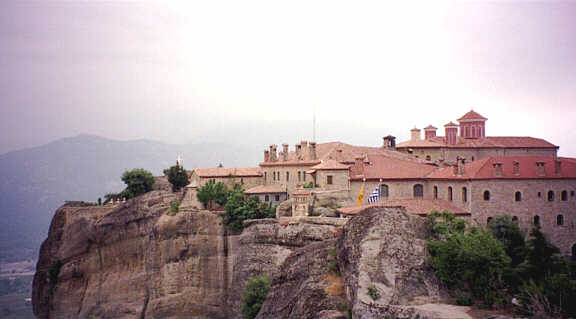
100 miles ( 160 km) north of Delphi in the fertile plains of Thesssaly are the monasteries of Metéora (translated as "suspended in air"). The monasteries are situated near the beginning of the Mount Pindus range and were built on the unique formations of perpendicular rocks. There are twenty-four such monasteries and they were built between the 14th and 16th centuries during the waning moments of the Byzantine Empire. Today, there are only five of them that are still inhabited by Greek Orthodox priests, nuns, and of course visiting tourists. The monastery in this photo is named Varlaam and it is among the five that are still inhabited today.
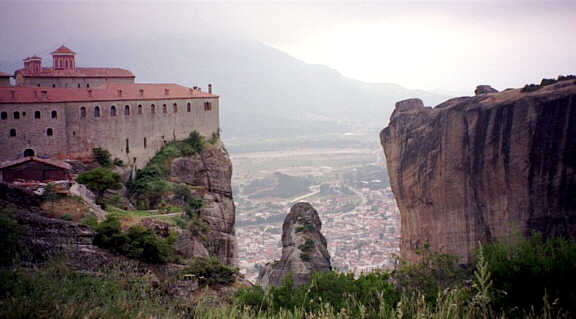
This is another shot of Varlaam and down below you can see the city of Kalambaka.
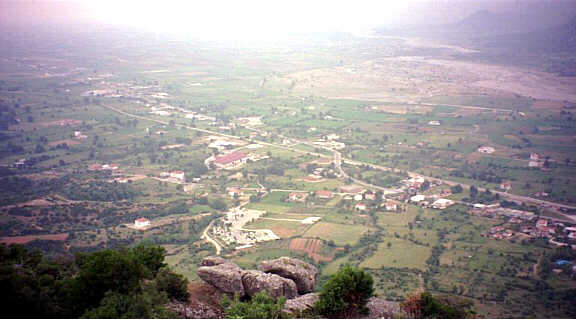
It was kind of cloudy and misty, but this photo gives you an idea of how great the view was from the monasteries.
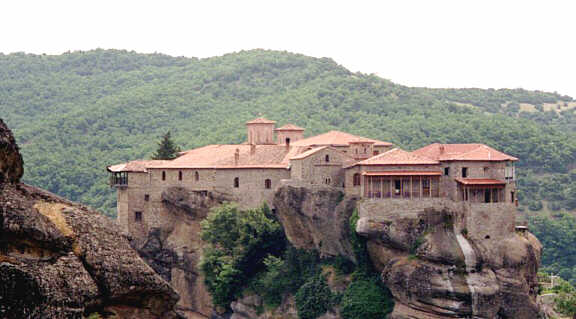
This early fourteenth century monastery is one of the two in Metéora that has a nunnery.
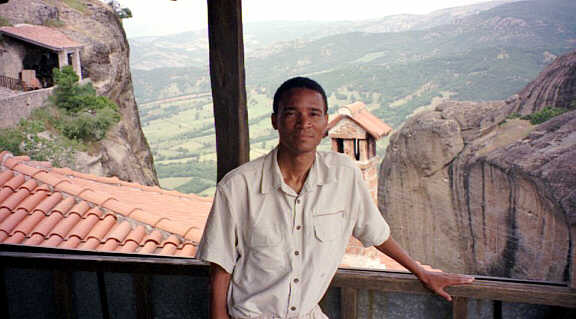
A shot from inside Agios Stefanos.
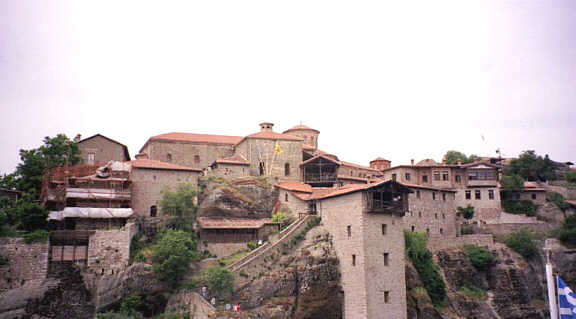
Megalou Metéorou or Grand Metéora is as its name suggests the largest of the monasteries. It was built in the last half of the fourteen century and contained the most elegant works of art. In the center of the photo you can just make out the steps that were carved into the mountain providing access. There were 115 of them and they were very steep an irregular but not too long ago, the only way up was by ladder and basket! The basket would descend from the tower also located in the center (off slightly to the right) of this photo. Inside the monastery was everything needed for self sufficiency including a very large dining hall among other things.
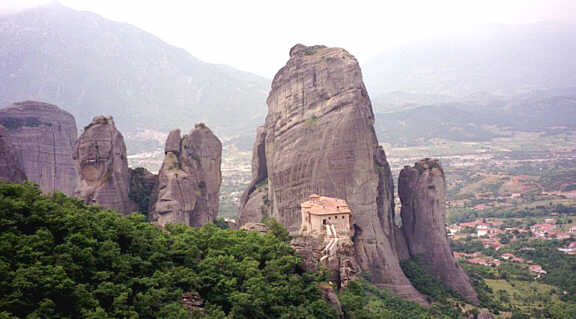
This is one of the newer monasteries and it was built in the early sixteenth century. The builders apparently slacked off because they didn't bother to put it on top of the nearby spires.
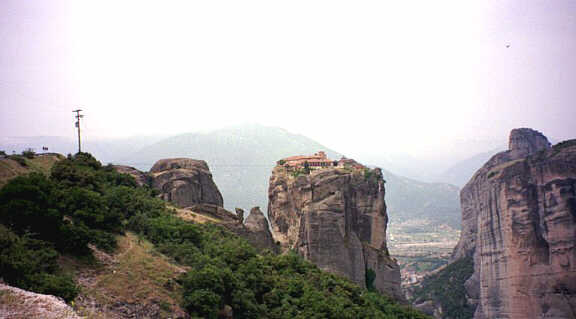
Built in the latter half of the fifteen century the monastery in this photo is among the few that are still occupied today.
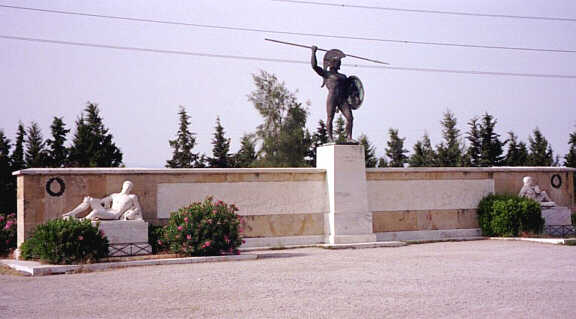
Southeast of Metéora, 100 miles northwest (160 km) from Athens is a small memorial dedicated to the Greek general Leonidas and several hundred of his soldiers. In 480 BC, as the Persian army marched south towards Athens, Leonidas and his small band of soldiers delayed them for three days at a pass known as Thermopylae. Over 2,500 years since that fierce battle, the topography of the region changed to the extent that it is not clear where the battle took place. Although Leonidas and his men were wiped out, they allowed Athens to be evacuated before the Persians could take the city. Subsequently, the Greeks defeated the Persians in the naval battle of Salamis (led by Themistocles' Walls of Wood). After beating the Persians in a ground battle at Plataea, Athens was retaken and the Persians were sent packing.
[Return to the Fiend's
Spring Vacation Page]
[Return to the Fiend's
SuperBear Page]